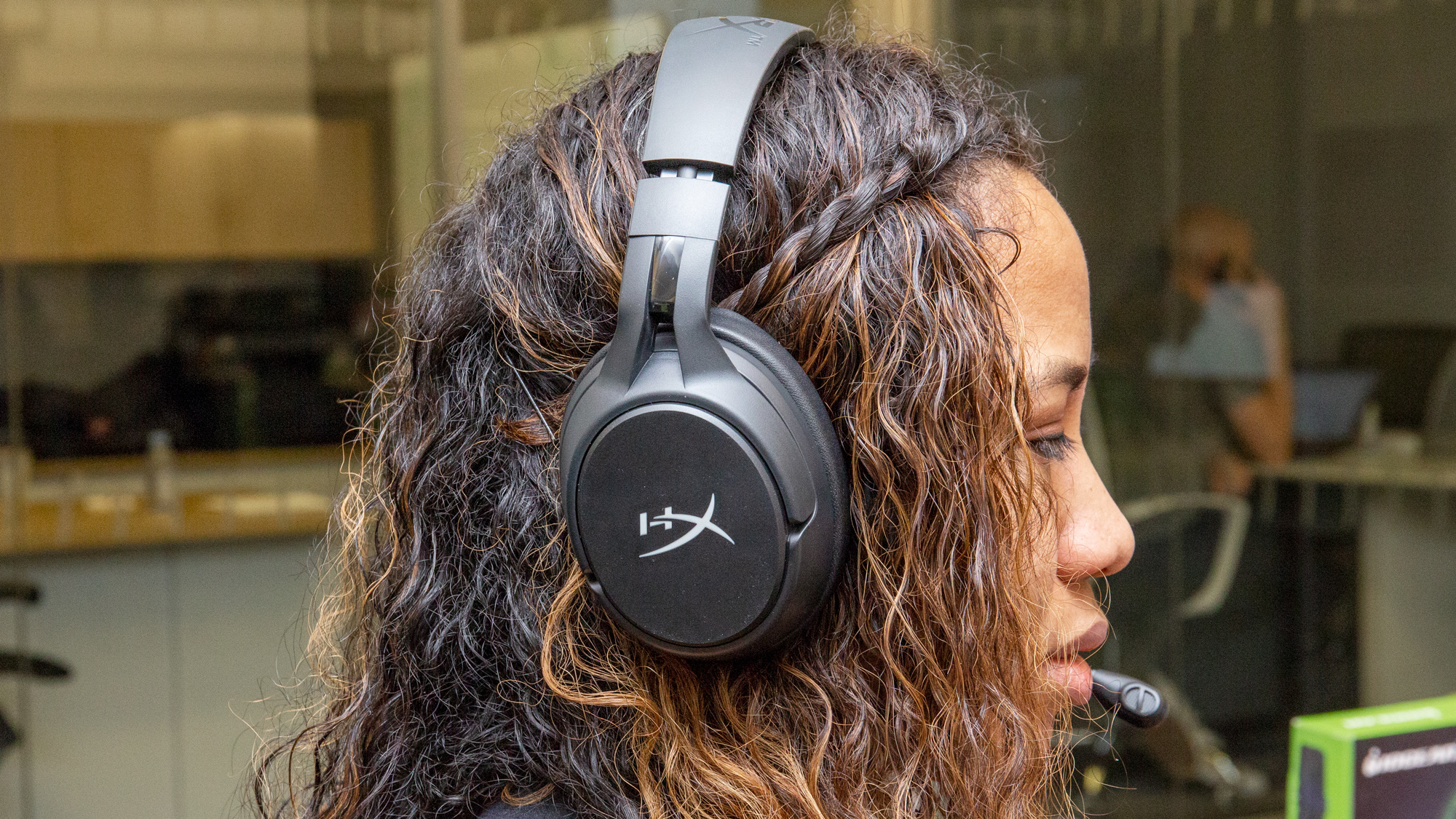Tom's Hardware Verdict
Attractive, lightweight and comfortable, this headset delivers what Cloud fans love and throws in convenience in the form of its smartly designed controls and Qi wireless charging. There are, however, some tradeoffs in features and issues with the beta software that make its $159.99 price tag a debatable value versus other products in the same lineup.
Pros
- +
Excellent, beefy 7.1 audio
- +
One of the most comfortable headsets on the market
- +
Superior battery life
- +
Wireless charging
- +
Intuitive controls on the earcup
Cons
- -
No USB-C
- -
Expensive
- -
Beta software can conflict with some motherboard apps and doesn’t offer much
Why you can trust Tom's Hardware
But that wireless Qi charging, while convenient, feels more like a gimmick than a feature that is really necessary – and you’ll need to pay extra to take advantage of it. And at $160 at the time of writing, its beta software also stands as an obstacle preventing the Cloud Flight S from being the best gaming headset.
The HyperX Cloud Flight S (PC and PlayStation 4) continues the vendor’s now long-standing tradition of comfort, an attractive design and strong build quality while boasting impressive battery life, wireless signal range and, for the first time, Qi wireless charging.
HyperX Cloud Flight S Specifications
| Driver Type | 50mm neodymium |
|---|---|
| Impendance | 32 Ohms |
| Frequency Response | 10-22,000 Hz |
| Design Style | Closed-back |
| Microphone Type | Bidirectional, noise cancelling, detachable |
| Connectivity | Wireless (USB 3.0 dongle) or 3.5mm cable; MicroUSB to USB Type-A charging cable |
| Weight | With mic: 0.7 pounds (320g); Without mic: 0.68 pounds (310g) |
| Cord Length | MicroUSB to USB Type-A charging cable: 3 feet (1m) |
| Lighting | None |
| Software | HyperX NGenuity |
Design and Comfort
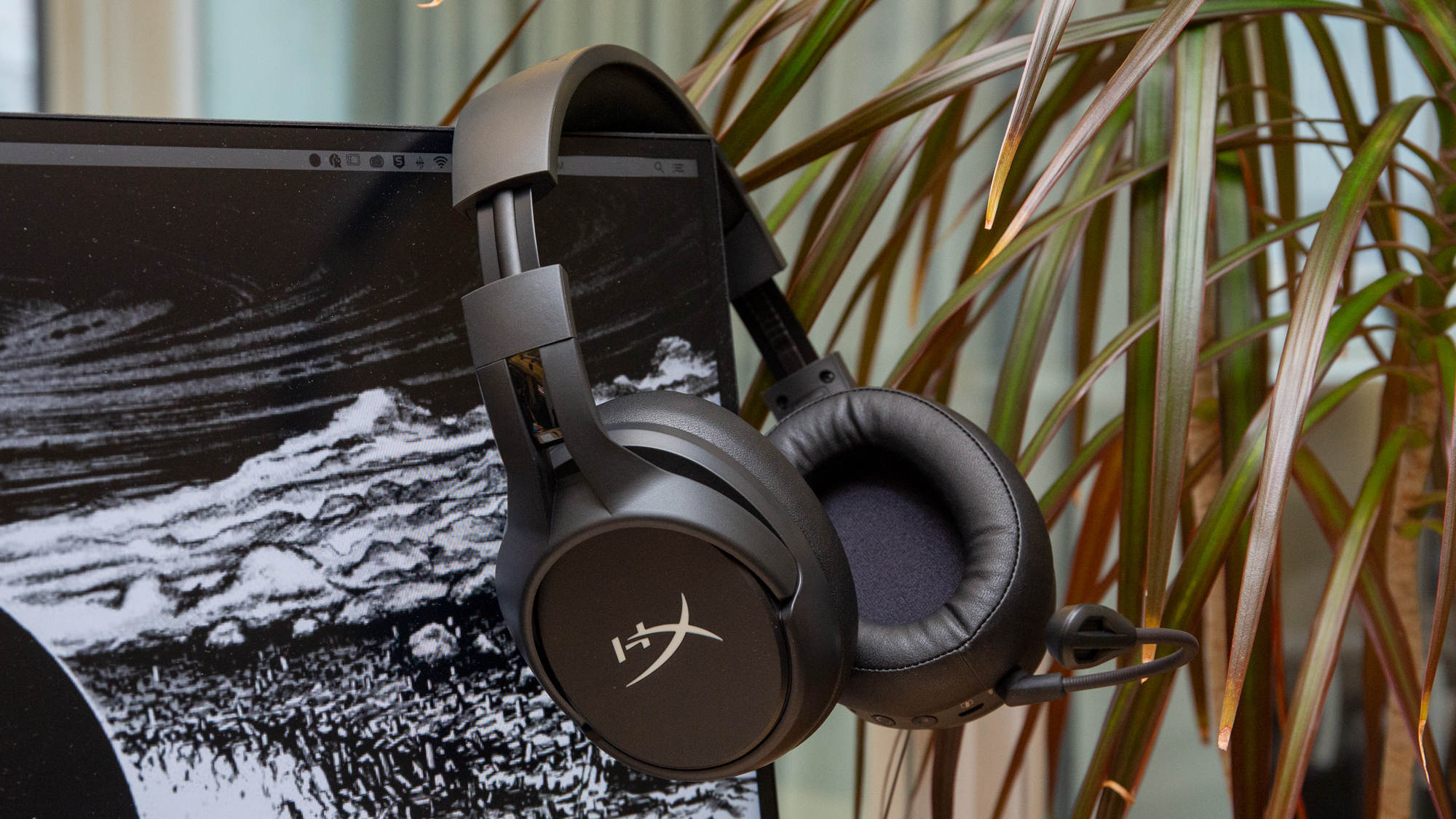
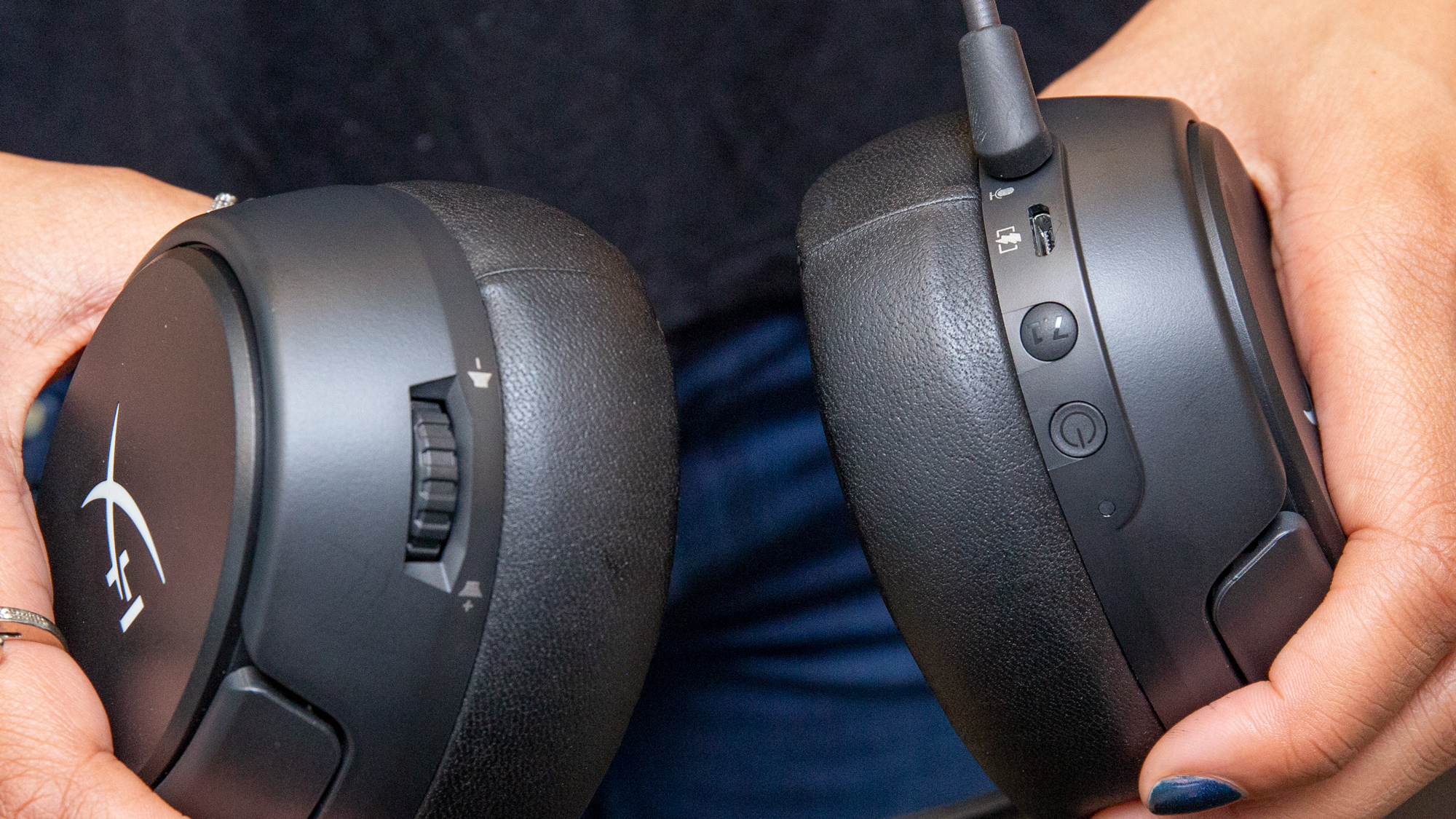


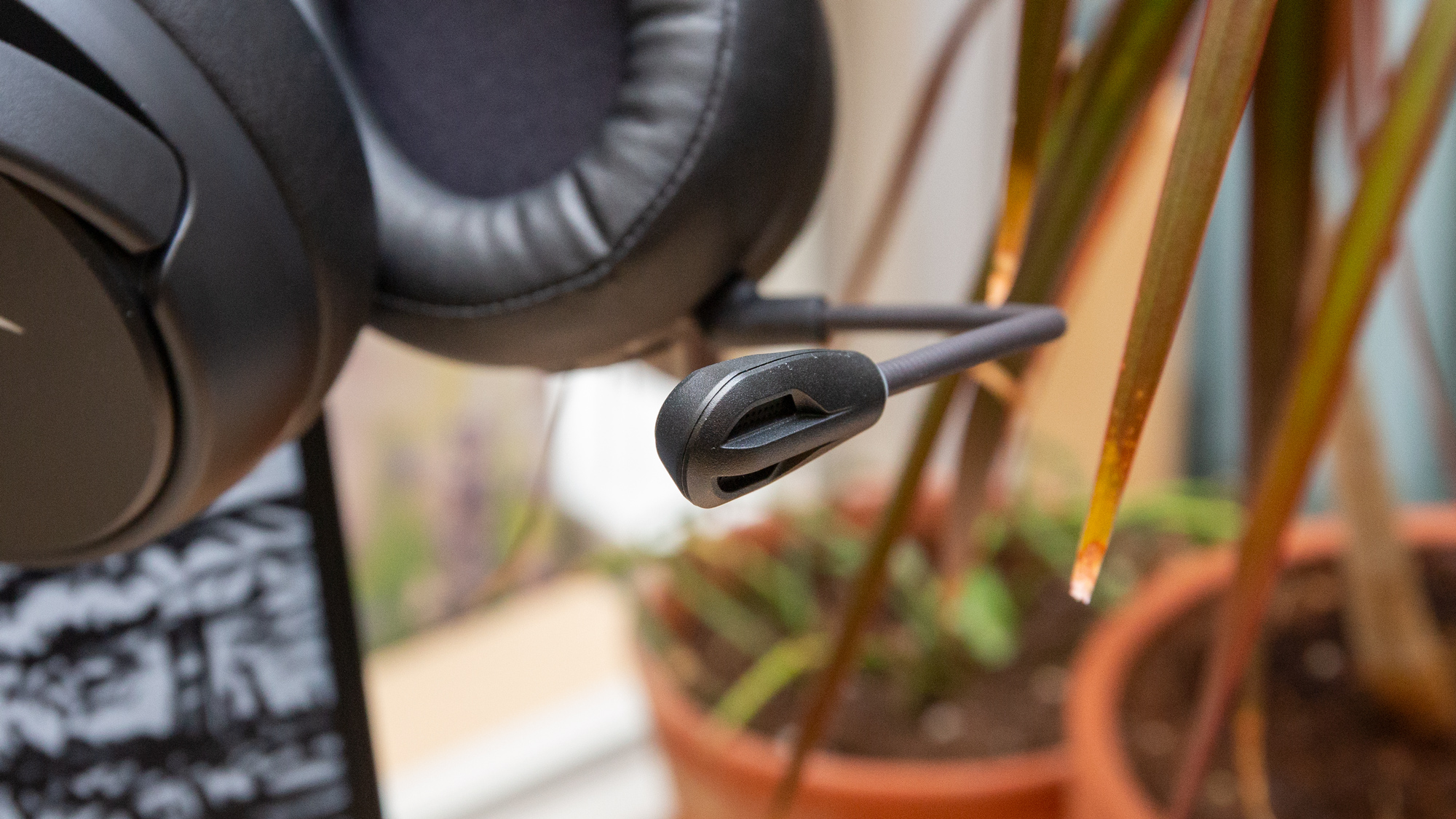
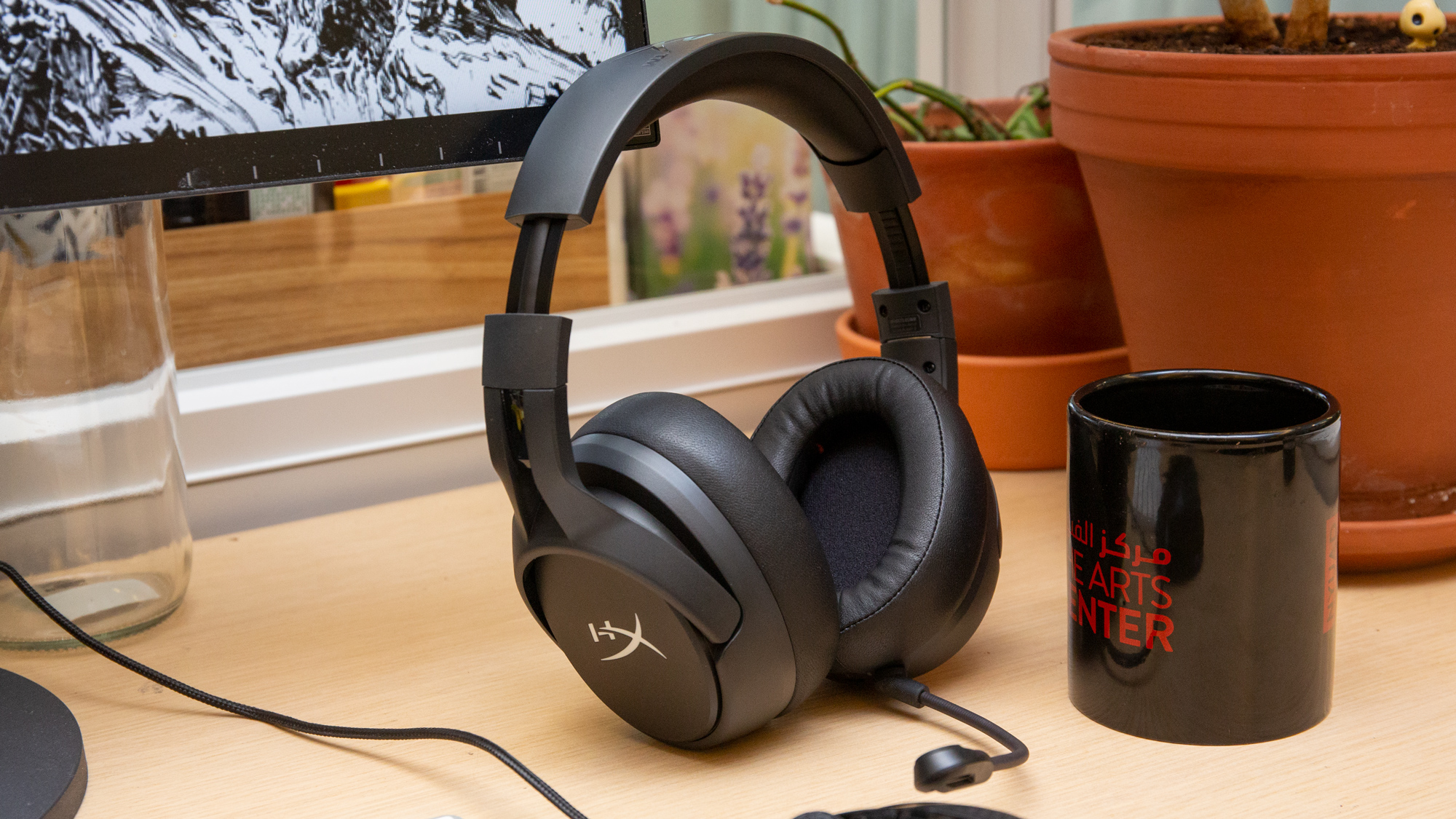
The Cloud Flight S is wireless only, connecting to PCs or PS4 via an included 2.4-GHz USB Type-A dongle. Although its wireless design makes it a prime candidate for use on the go, the Flight S lacks an adapter for using with smartphone’s USB Type-C ports. However, I had an adapter on hand and was able to successfully use the headset with my smartphone.
The Cloud Flight S is the third addition to HyperX’s wireless Flight line (there’s also the Cloud Flight for PC and PS4 and the CloudX Flight for Xbox One). It follows similar aesthetics, forgoing things like metal rings protruding from the earcups, which you’ll find in HyperX’s popular Cloud Alpha and the Cloud Mix cans. The finish is a matte stealth black and you’ll find the HyperX logo in white on the earcups and engraved across the top of the headband. The overall look is pleasing and wouldn’t be out of place in a professional environment since it avoids the spiky contours and RGB bling found on a large segment of gaming headsets.
The Cloud Flight S features a steel frame with leatherette foam padding, including very well-padded earcups, and adjusting for comfort is simple via push-pull on those earcups. Weighing in at only 0.7 pounds (320g) with the microphone attached, the Cloud Flight S is extremely light and comfortable to wear. The headband fits snugly, and the earcups have enough depth to provide the ears some breathing room during long gaming sessions. The Cloud Flight S offers a degree of comfort that is rare among gaming headsets, and after an hour of use, I nearly forgot I was wearing it.
Breaks are always necessary, however, and the Cloud Flight S earcups rotate 90 degrees to allow the headset to rest comfortably on the neck when not in active use. And when it’s time to return to the fray, they easily snap back into position with a satisfying click.
The Cloud Flight S keeps controls simple. There is a mic input and MicroUSB port for the charging cable on the left earcup, as well as a switch for toggling the stereo headset’s virtual 7.1 surround sound. The left earcup also features four buttons on the outside, arranged similarly to a D-pad, that controls mic mute, mic activation and game and chat volume levels. Meanwhile, the right earcup houses the volume wheel.
Get Tom's Hardware's best news and in-depth reviews, straight to your inbox.
Audio Performance
The Cloud Flight S delivers the crisp audio HyperX’s Cloud line is known for – the bass is throaty and authoritative, mids have a solid punch and highs ring true when virtual 7.1 surround sound is engaged.
In game, HyperX’s finely tuned virtual 7.1 remained as impressive as ever and greatly enhanced immersion regardless of genre. Unfortunately, when I turned 7.1 off, there was a noticeable absence of low end, and high frequencies became shrill. Gunfire in CS:GO and Doom simply didn’t have the necessary impact without virtual surround.
The deficiencies in audio performance were highly apparent when listening to music across genres, from the classic West Coast hip hop of Dr. Dre to the cavernous death-doom metal of Desolate Shrine. In both cases, listening to songs without 7.1 was clear but decidedly unsatisfying. This experience carried over to movies as well. Battles in The Lord of the Rings: Return of the King were thunderous in 7.1 mode but lacked depth with 7.1 toggled off.
Wireless audio did not produce any noticeable lag. The signal range, which HyperX pegs as being as high as 65.62 feet (20m) was quite solid. I was able to walk from my streetside room to my kitchen before losing signal, approximately 35 feet. But this is still impressive, considering the fact that the layout of my apartment ( a railroad style two bedroom) contains numerous obstructions. In a more open environment, Hyper X’s figure seems more attainable, but keep in mind that your mileage may vary based on the layout of your home or office.
The Cloud Flight S’ detachable, bidirectional noise-canceling mic is serviceable but not outstanding. Audio output fell on the trebly side during my testing and made my voice have a nasal sound. There was also audible hissing in the higher frequency range. On the plus side, the reduced low frequency response reduced pop, which is handy since the mic doens’t include a pop filter. Plus, the use of a bidirectional microphone (instead of omnidirectional) greatly improved noise reduction. While gamers could still hear the clacking of my gaming keyboard’s clicky Cherry MX Blue switches in the background, it did an admirable job of eliminating ambient room noise, like the constant whine of my oscillating fan.
Features and Software

You have the option of downloading HyperX’s NGenuity beta software,but currently there’s very little reason to install it since you can perform most of the functions it offers with the controls on the headset itself.
NGenuity does allow users to customize the functionality of the side buttons on the right earcup of the headset, which is handy for folks who aren’t keen on the default bindings. The app also offers the option to link presets to games.

But there is very little included here by way of audio customization. You will not see an adjustable EQ nor any tools that allow tweaking of the surround sound experience. As a result, NGenuity is, at this stage, nearly unnecessary.
In addition, you may find that NGenuity has trouble seeing your headset depending on the software you have installed on your PC. RGB software from motherboard vendors, such as MSI and Asus, can cause conflicts that prevent NGenuity from communicating with the Cloud Flight S. I worked through this problem while evaluating the headset with the desktop I built with an Asus X99-Deluxe II motherboard but had no issues using NGenuity on my Alienware 17 gaming laptop. Hopefully, this is something that can be patched over time, especially since NGenuity is still a beta.
Battery Life
HyperX claims the Cloud Flight S has a battery life of up to 30 hours. In practice, I was able to achieve a battery life of 25 hours at a full charge with 7.1 sound engaged. The full 30 hours is more realistic without 7.1, as this setting offers a significant boost in output and, as such, consumes more power.
You can charge the Cloud Flight S with the included MicroUSB to USB-A charging cable, but the headset’s most promoted feature is the ability to charge it with any Qi wireless charger, which you’d have to purchase separately. HyperX makes its ChargePlay Base Qi wireless charger ($50 at the time of writing), but we also successfully charged ours. with a rival-branded headset stand with Qi charging, the Cooler Master GS750 RGB. Charging over Qi can be a bit tricky as the headset needs to rest on its left earcup, and both earcups need to be touching. Determining the exact correct position for charging took a little work. But when I did get it right, the headset charged as expected.
A Qi wireless charging headset is a first for HyperX, but it would have been nice to offer users the option of fast charging via USB-C, as it can take a significant amount of time to replenish a full charge (in my case, over 2 hours), and USB-C may have cut that timeframe by as much as half.
Bottom Line
The HyperX Cloud Flight S is an attractive, well-designed wireless gaming headset that offers superior comfort, incredible battery life and wireless charging. It’s a very solid piece of hardware with clever control options, but offers little to make it a compelling purchase over rivals, including HyperX’s own wireless Cloud Flight, which is currently selling for $65 less ($94 at the time of writing) than the Cloud Flight S.
The Cloud Flight S does offer better frequency response over wireless than the Cloud Flight, on-earcup controls and Qi wireless charging. But the original Cloud Flight further makes a case against the Cloud Flight S by including the option for using a 3.5mm cable, which the Cloud Flight S lacks. While it’s nice to forego the relatively feature-bereft NGenuity software in favor of onboard controls and wireless charging, these features don’t feel like must-haves – especially when you consider that you must buy a Qi charger separately to take advantage of a new gimmick for which you’re already being charged.
But if you’re really excited about wireless charging and don’t care about the costs required to get it with your headset, the Flight S is one the Cloud line’s most usable and comfortable cans.
MORE: Best Gaming Headsets
MORE: Gaming Headset Reviews
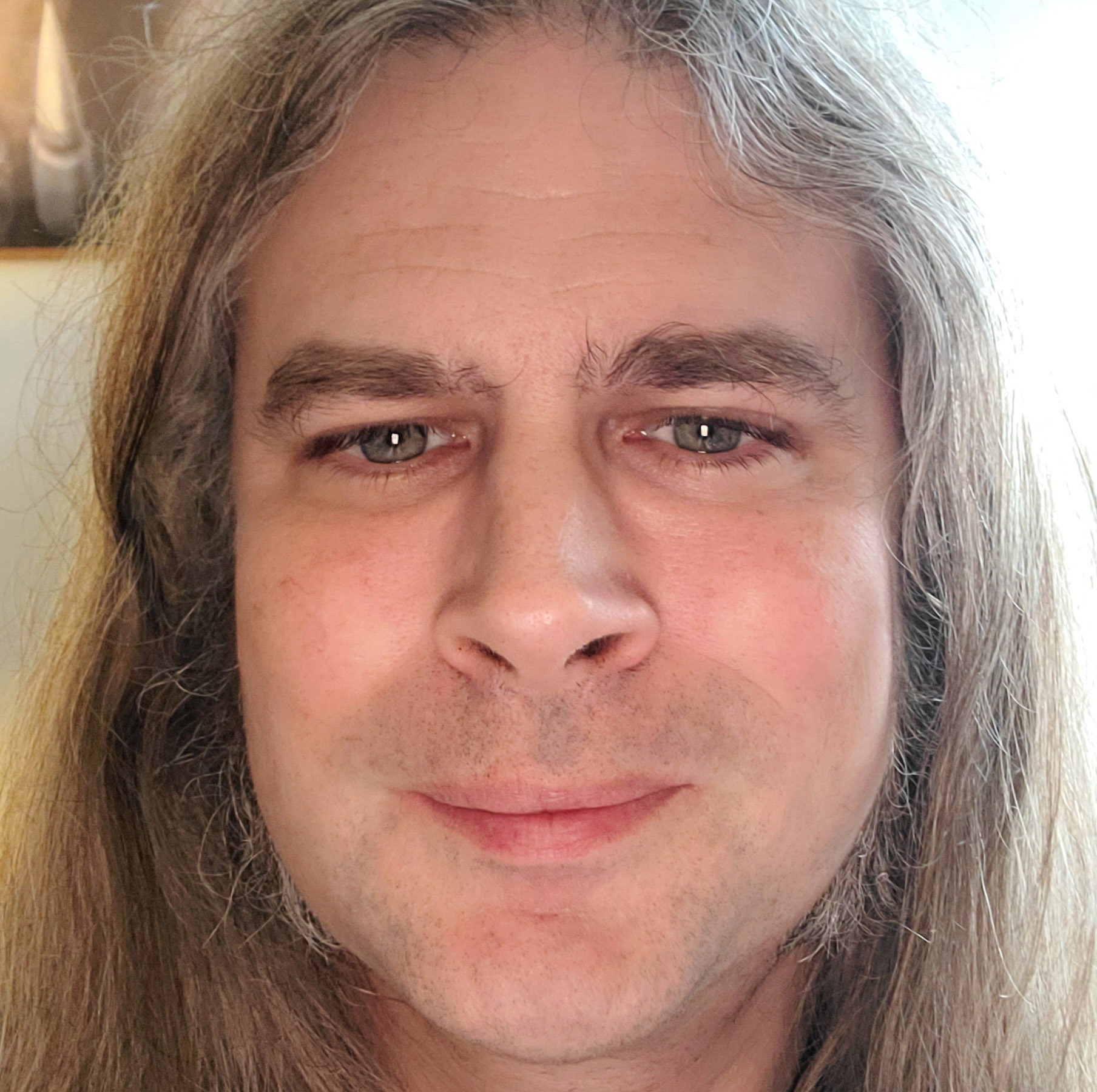
Nate Rand is a freelance reviewer for Tom's Hardware US, covering gaming headsets, keyboards, mice, and microphones.
